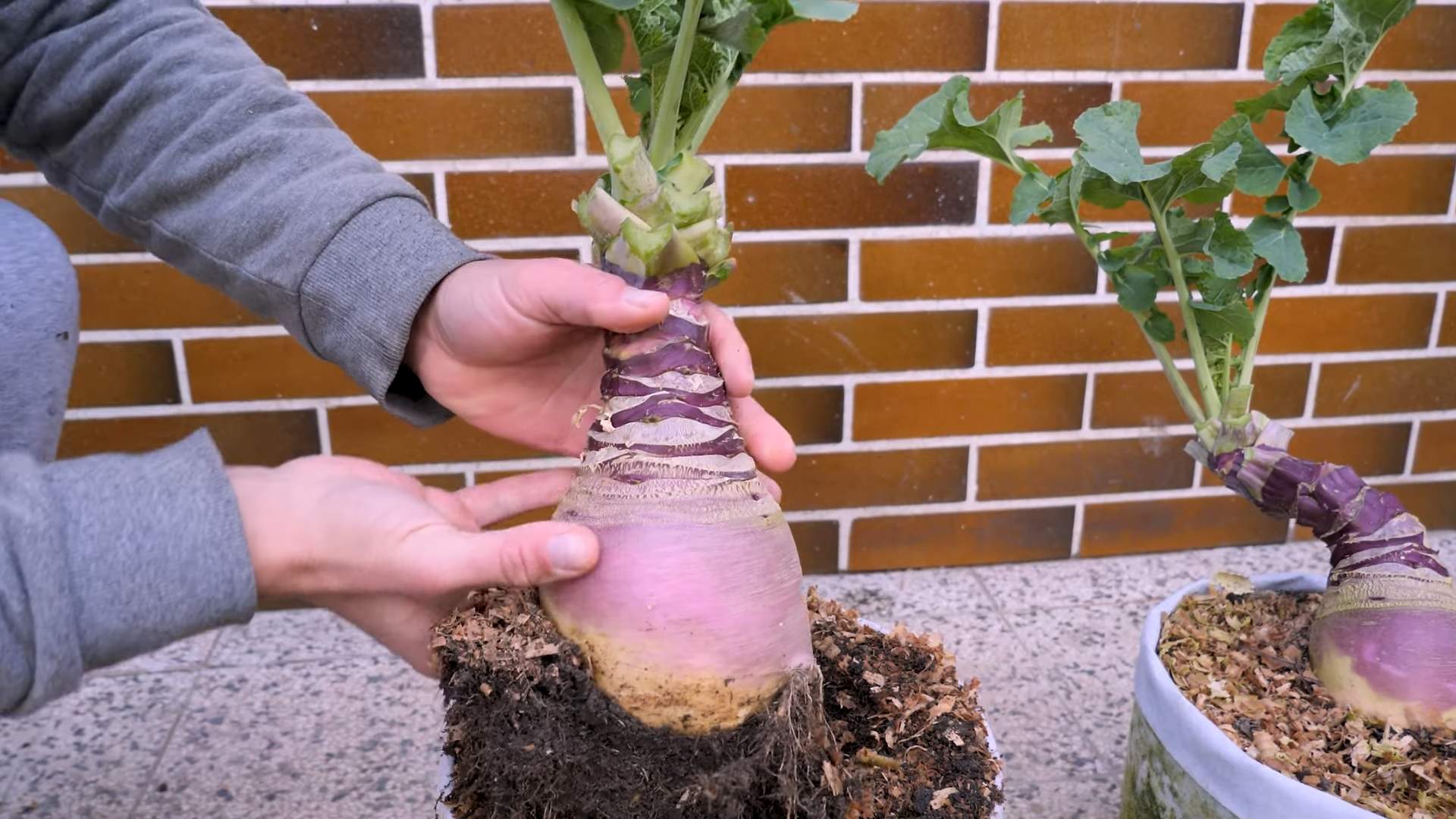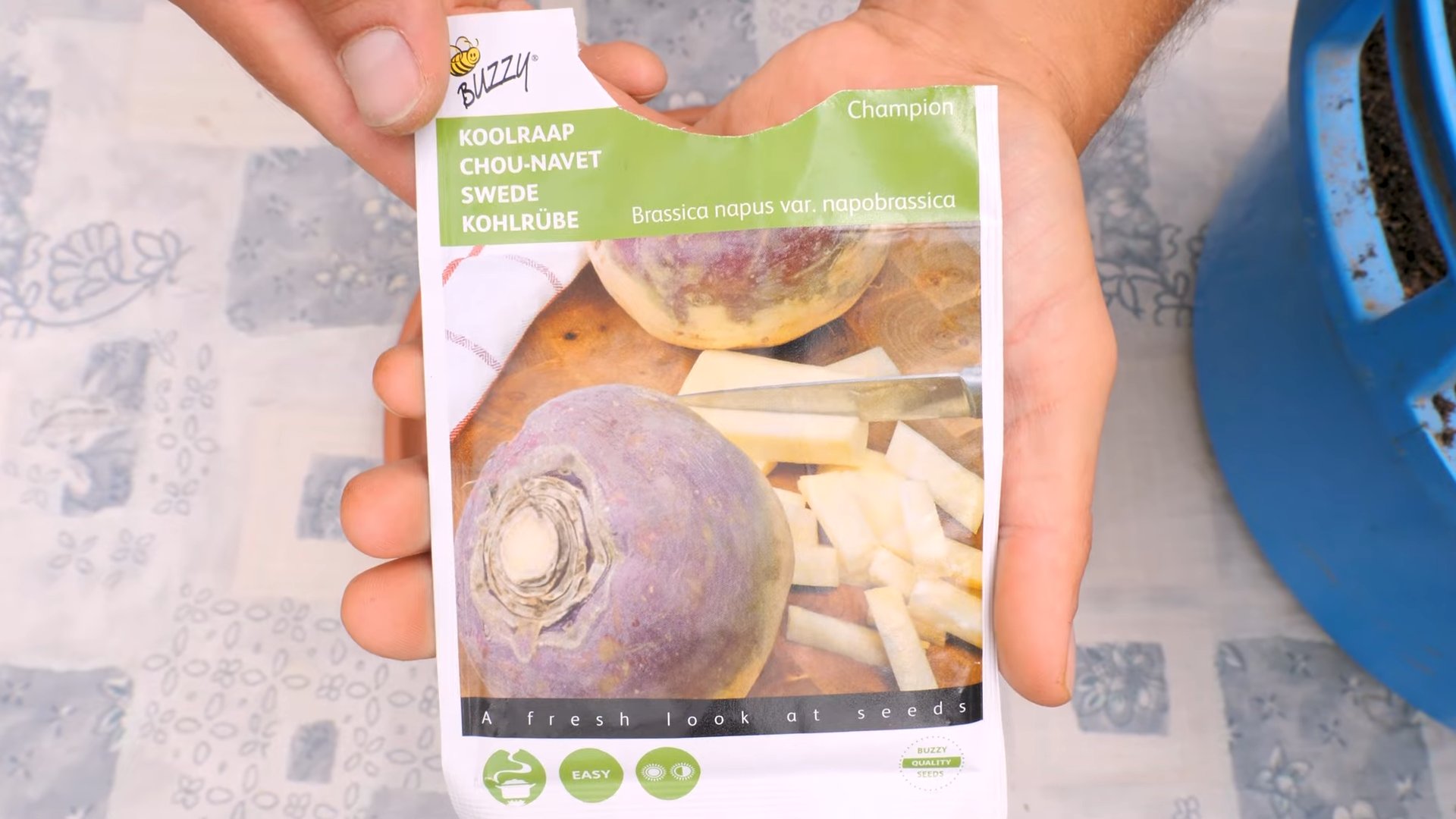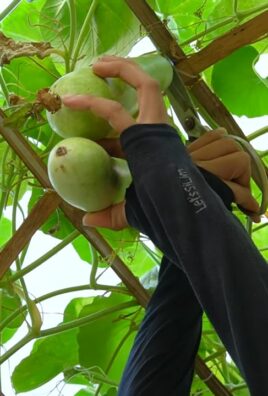Grow Broccoli from Seed and unlock the joy of fresh, homegrown goodness right in your backyard! Imagine biting into crisp, flavorful broccoli florets that you nurtured from tiny seeds – it’s an incredibly rewarding experience. For centuries, broccoli has been a staple in gardens and kitchens worldwide, tracing its roots back to ancient Roman civilization. They valued it not only for its taste but also for its nutritional benefits.
But let’s be honest, the thought of starting from scratch can be a little daunting. Store-bought broccoli is convenient, but it often lacks the vibrant flavor and freshness of homegrown produce. Plus, who knows what chemicals might have been used in its cultivation? That’s where our DIY guide comes in! I’m here to show you that growing broccoli from seed is easier than you think.
This article is packed with simple, step-by-step instructions and insider tips to help you successfully grow broccoli from seed, even if you’re a complete beginner. We’ll cover everything from choosing the right seeds and preparing your soil to transplanting seedlings and protecting your precious plants from pests. Get ready to transform your garden into a broccoli paradise and enjoy the satisfaction of harvesting your own delicious, healthy crop!

Growing Broccoli from Seed: A Complete DIY Guide
Okay, broccoli lovers! Let’s get our hands dirty and learn how to grow our own delicious and nutritious broccoli from seed. It’s easier than you think, and the taste of homegrown broccoli is simply unbeatable. I’m going to walk you through every step, from choosing the right seeds to harvesting your beautiful broccoli heads.
Choosing Your Broccoli Variety
First things first, let’s talk about broccoli varieties. There are tons to choose from, each with its own unique characteristics. Here are a few popular options:
* ‘Waltham 29’: A classic, reliable variety that produces large, dark green heads. It’s known for its good flavor and disease resistance.
* ‘Calabrese’: Another popular choice, ‘Calabrese’ is a fast-growing variety that produces large central heads followed by smaller side shoots.
* ‘DiCicco’: If you’re looking for an early harvest, ‘DiCicco’ is a great option. It produces smaller heads but is ready to harvest sooner than other varieties.
* ‘Purple Sprouting’: For something a little different, try ‘Purple Sprouting’ broccoli. It produces purple shoots that are delicious steamed or roasted.
* ‘Romanesco’: This variety is known for its unique, fractal-like head. It’s a bit more challenging to grow but well worth the effort for its beautiful appearance and nutty flavor.
Consider your climate, growing space, and desired harvest time when choosing your broccoli variety. Read the seed packet descriptions carefully to make the best choice for your garden.
Timing is Everything: When to Start Your Seeds
Broccoli is a cool-season crop, which means it thrives in cooler temperatures. The timing of your seed starting will depend on your climate.
* For spring planting: Start your seeds indoors about 6-8 weeks before the last expected frost. This will give your seedlings a head start and allow them to mature before the summer heat arrives.
* For fall planting: Start your seeds indoors about 12-14 weeks before the first expected frost. This will allow your broccoli to mature during the cool fall months.
You can also direct sow broccoli seeds in your garden, but this is generally only recommended in areas with mild winters. If you choose to direct sow, wait until the soil has warmed up to at least 50°F (10°C).
Materials You’ll Need
Before we get started, let’s gather our supplies. Here’s what you’ll need:
* Broccoli seeds
* Seed starting trays or small pots
* Seed starting mix (a light, well-draining mix is best)
* Watering can or spray bottle
* Grow lights (optional, but recommended for indoor seed starting)
* Fertilizer (a balanced fertilizer is best)
* Garden soil
* Trowel or shovel
* Mulch (optional, but helpful for weed control and moisture retention)
Starting Your Seeds Indoors: Step-by-Step
Okay, let’s get those seeds started! Here’s how to do it:
1. Prepare your seed starting trays or pots: Fill your trays or pots with seed starting mix. Gently tap the trays to settle the mix.
2. Sow your seeds: Make a small indentation in the soil (about ¼ inch deep) in each cell or pot. Place 2-3 broccoli seeds in each indentation. Cover the seeds with a thin layer of seed starting mix.
3. Water your seeds: Gently water the seeds using a watering can or spray bottle. Be careful not to overwater, as this can lead to damping off (a fungal disease that can kill seedlings).
4. Provide light: Place your seed starting trays or pots under grow lights or in a sunny window. If using grow lights, keep them about 2-4 inches above the seedlings.
5. Maintain moisture: Keep the soil consistently moist, but not soggy. Water as needed to prevent the soil from drying out.
6. Thin your seedlings: Once your seedlings have developed their first true leaves (the leaves that appear after the cotyledons, or seed leaves), thin them to one seedling per cell or pot. Choose the strongest, healthiest seedling and snip off the others at the soil line.
7. Fertilize your seedlings: Once your seedlings have developed their second set of true leaves, start fertilizing them with a diluted balanced fertilizer. Follow the instructions on the fertilizer package.
Transplanting Your Seedlings to the Garden
Once your seedlings are about 4-6 inches tall and have developed several sets of true leaves, they’re ready to be transplanted to the garden.
1. Harden off your seedlings: Before transplanting, you’ll need to harden off your seedlings. This means gradually exposing them to outdoor conditions over a period of 7-10 days. Start by placing them in a sheltered location outdoors for a few hours each day, gradually increasing the amount of time they spend outside.
2. Prepare your garden bed: Choose a sunny location in your garden with well-drained soil. Broccoli needs at least 6 hours of sunlight per day. Amend the soil with compost or other organic matter to improve its fertility and drainage.
3. Transplant your seedlings: Dig holes that are slightly larger than the root balls of your seedlings. Gently remove the seedlings from their trays or pots and place them in the holes. Space the seedlings about 18-24 inches apart.
4. Water your seedlings: Water the seedlings thoroughly after transplanting.
5. Mulch your plants: Apply a layer of mulch around your broccoli plants to help retain moisture, suppress weeds, and regulate soil temperature.
Caring for Your Broccoli Plants
Now that your broccoli plants are in the garden, it’s important to provide them with the care they need to thrive.
* Watering: Water your broccoli plants regularly, especially during dry periods. Broccoli needs consistent moisture to produce large, healthy heads. Aim for about 1-1.5 inches of water per week.
* Fertilizing: Fertilize your broccoli plants every 2-3 weeks with a balanced fertilizer. Follow the instructions on the fertilizer package.
* Weeding: Keep your garden bed free of weeds, as weeds can compete with your broccoli plants for nutrients and water.
* Pest control: Broccoli is susceptible to a variety of pests, including cabbage worms, aphids, and flea beetles. Monitor your plants regularly for signs of pests and take action as needed. You can use organic pest control methods, such as insecticidal soap or neem oil, to control pests.
* Disease control: Broccoli is also susceptible to a variety of diseases, including clubroot and black rot. Choose disease-resistant varieties and practice good garden hygiene to prevent diseases.
Harvesting Your Broccoli
The moment we’ve all been waiting for! It’s time to harvest your broccoli.
* When to harvest: Harvest your broccoli when the heads are firm and tight, and the flower buds are still closed. If the flower buds start to open, the broccoli will become bitter.
* How to harvest: Cut the central head of broccoli with a sharp knife, leaving about 4-6 inches of stem. This will encourage the plant to produce side shoots, which you can harvest later.
* Storing your broccoli: Store your broccoli in the refrigerator for up to a week. To keep it fresh, wrap it in a damp paper towel and place it in a plastic bag.
Troubleshooting Common Problems
Even with the best care, you may encounter some problems when growing broccoli. Here are a few common issues and how to address them:
* Yellowing leaves: Yellowing leaves can be a sign of nutrient deficiency, overwatering, or disease. Check the soil moisture and nutrient levels, and treat any diseases as needed.
* Small heads: Small heads can be caused by insufficient sunlight, poor soil fertility, or overcrowding. Make sure your broccoli plants are getting enough sunlight and nutrients, and thin them as needed.
* Bolting: Bolting (premature flowering) can be caused by hot weather or stress. Choose heat-tolerant varieties and provide your plants with consistent moisture to prevent bolting.
* Pest infestations: Monitor your plants regularly for signs of pests and take action as needed. Use organic pest control methods whenever possible.
* Disease problems: Choose disease-resistant varieties and practice good garden hygiene to prevent diseases. Treat any diseases as soon as they appear.
Enjoying Your Homegrown Broccoli
Congratulations! You’ve successfully grown your own broccoli from seed. Now it’s time to enjoy the fruits (or rather, vegetables) of your labor. Broccoli is delicious steamed, roasted, stir-fried, or eaten raw in salads. Get creative and experiment with different recipes to find your favorite ways to enjoy your homegrown broccoli. I personally love roasting it with a little olive oil, garlic, and parmesan cheese.
Growing broccoli from seed is a rewarding experience that allows you to enjoy fresh, healthy

Conclusion
So, there you have it! Growing broccoli from seed might seem daunting at first, but as you’ve seen, it’s a surprisingly rewarding and cost-effective way to enjoy fresh, delicious broccoli right from your own backyard. Forget those wilted, overpriced heads at the grocery store – imagine the satisfaction of harvesting your own vibrant, green broccoli, knowing exactly where it came from and how it was grown.
This DIY trick isn’t just about saving money; it’s about connecting with nature, learning new skills, and enjoying the unparalleled flavor of homegrown produce. The taste difference between store-bought and homegrown broccoli is truly remarkable. The fresh, slightly sweet, and subtly earthy flavor of homegrown broccoli is something you simply can’t replicate.
But the benefits don’t stop there. By starting your broccoli from seed, you have complete control over the varieties you grow. Want to try a purple sprouting broccoli for a splash of color in your garden and on your plate? Or perhaps a Romanesco broccoli with its stunning fractal florets? The possibilities are endless! You can also choose varieties that are specifically suited to your local climate and growing conditions, ensuring a more successful and abundant harvest.
Variations and Suggestions:
* Succession Planting: To enjoy a continuous harvest of broccoli throughout the growing season, consider succession planting. Sow a new batch of seeds every few weeks to ensure a steady supply of fresh broccoli.
* Companion Planting: Broccoli thrives when planted alongside certain companion plants. Marigolds can help deter pests, while herbs like dill and rosemary can attract beneficial insects.
* Container Gardening: If you’re short on space, don’t worry! Broccoli can also be grown in containers. Choose a large container with good drainage and use a high-quality potting mix.
* Experiment with Varieties: Don’t be afraid to try different varieties of broccoli to find your favorites. From classic green varieties to colorful purple and Romanesco types, there’s a broccoli out there for everyone.
* Broccoli Raab: Consider growing Broccoli Raab, also known as rapini. It’s a slightly more bitter and leafy relative of broccoli that matures much faster and offers multiple harvests.
Growing broccoli from seed is more than just a gardening project; it’s an investment in your health, your well-being, and your connection to the natural world. It’s a chance to learn new skills, enjoy fresh, delicious produce, and experience the satisfaction of growing your own food.
So, what are you waiting for? Grab some seeds, get your hands dirty, and start growing your own broccoli today! We’re confident that you’ll be amazed by the results.
And most importantly, we want to hear about your experience! Share your tips, tricks, and photos with us in the comments below. Let’s create a community of broccoli-growing enthusiasts and inspire others to try this rewarding DIY trick. Happy gardening!
Frequently Asked Questions (FAQ)
How long does it take to grow broccoli from seed?
Growing broccoli from seed to harvest typically takes between 70 and 100 days, depending on the variety and growing conditions. Starting seeds indoors can shorten the time to harvest, as you’ll be giving your plants a head start. Remember to check the seed packet for specific information on the variety you’ve chosen.
What are the best conditions for growing broccoli?
Broccoli thrives in cool weather and requires at least six hours of sunlight per day. The ideal soil temperature for germination is between 65°F and 75°F (18°C and 24°C). The soil should be well-drained and rich in organic matter. Broccoli also needs consistent moisture, so water regularly, especially during dry periods.
What are some common problems when growing broccoli, and how can I prevent them?
Some common problems include cabbage worms, aphids, and clubroot. Cabbage worms can be controlled with Bacillus thuringiensis (Bt) or by handpicking them off the plants. Aphids can be washed off with a strong stream of water or treated with insecticidal soap. Clubroot is a soilborne disease that can be prevented by practicing crop rotation and ensuring good soil drainage. Using disease-resistant varieties can also help.
Can I grow broccoli in containers?
Yes, broccoli can be grown in containers. Choose a large container that is at least 12 inches deep and wide to accommodate the plant’s root system. Use a high-quality potting mix and ensure the container has good drainage. Water regularly and fertilize every few weeks with a balanced fertilizer.
When is the best time to harvest broccoli?
Harvest broccoli when the head is firm and the florets are tightly closed. If the florets start to open and turn yellow, it’s a sign that the broccoli is overripe. Cut the main head with a sharp knife, leaving a few inches of stem. Side shoots will often develop after the main head is harvested, providing you with additional broccoli over a longer period.
What kind of fertilizer should I use for broccoli?
Broccoli is a heavy feeder and benefits from regular fertilization. Use a balanced fertilizer with a ratio of 10-10-10 or 14-14-14. You can also amend the soil with compost or other organic matter to provide essential nutrients. Fertilize at planting time and then again every few weeks during the growing season.
How do I prevent broccoli from bolting (going to seed)?
Bolting is when a plant prematurely flowers and goes to seed, often due to stress from heat or lack of water. To prevent bolting, choose bolt-resistant varieties, plant broccoli in a location that receives afternoon shade, and water regularly to keep the soil consistently moist. Mulching around the plants can also help to keep the soil cool and moist.
Can I eat the leaves of the broccoli plant?
Yes, the leaves of the broccoli plant are edible and nutritious. They can be cooked like collard greens or kale. They have a slightly more bitter flavor than the florets, but they are a great addition to soups, stews, and stir-fries.
How do I store harvested broccoli?
Store harvested broccoli in the refrigerator in a plastic bag or container. It will keep for about a week. To prolong its shelf life, you can blanch it for a few minutes and then freeze it.
What are some creative ways to use homegrown broccoli?
Beyond steaming or roasting, try adding your homegrown broccoli to soups, salads, stir-fries, and casseroles. You can also use it to make broccoli cheese soup, broccoli slaw, or even broccoli pesto. Get creative and experiment with different recipes to find your favorites! Don’t forget to try grilling broccoli for a smoky and delicious flavor.




Leave a Comment